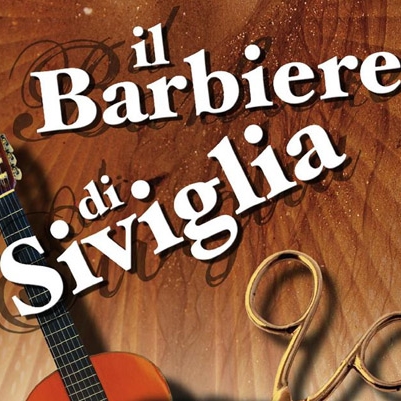
Overview
Synopsis
Count Almaviva is in love with a young woman named Rosina, so he disguises himself as a poor student so that she may fall in love for him, not his wealth. Rosina is barely allowed out of the house because her guardian, Bartolo, an old grumpy man, wants to marry her for her large dowry, once she is of age. Figaro, the local barber, used to be the Count’s servant, so the Count asked him to help him meet Rosina in private. Figaro, Almaviva, and Rosina all plot to trick Bartolo and ruin his plans to marry Rosina. However, Bartolo tricks Rosina into thinking that Linodoro works for Almaviva and is not in love with her. Devastated, she agrees to marry Bartolo. The Count and Figaro come to get Rosina, but she confronts Lindoro with what she has been told. Count Almaviva reveals himself to everyone and Rosina agrees to leave with him. Under Bartolo’s nose, The Count and Rosina get married, with Figaro as a witness. Rosina agrees to give Bartolo her dowry, and all sing of their love and happiness.
Show Information
Context
Rossini composed Il barbiere di Siviglia, ossia L’inutile precauzione (The Barber of Seville, or The Futile Precaution) based on the play by Pierre Beaumarchais, Le Barbier de Séville, a French comedy. Beaumarchais wrote a famous trilogy of plays, the second of which Mozart based Le Nozze di Figaro. A handful of other composers also created operas based off of the first play, and one, Paisiello, did not approve of the fact that Rossini had also written a version. Before the composition of
to read the context for Il barbiere di Siviglia and to unlock other amazing theatre resources!Plot
Act One: In front of Bartolo’s house
Outside of Bartolo’s house, a band of musicians and Count Almaviva, disguised as a poor student, Lindoro, try to serenade Rosina, but she does now come out. (Ecco, ridente in cielo) Count Almaviva is in love with the young woman, but wants her to love him for himself, and not for his wealth and status. Disappointed, Almaviva sends the musicians away and sulks, by himself. Figaro enters singing about how he is the “go-to-guy” of the town ([Largo al
to read the plot for Il barbiere di Siviglia and to unlock other amazing theatre resources!Characters
| Name | Part Size | Gender | Vocal Part |
|---|---|---|---|
|
Lead |
Male |
Tenor |
|
|
Lead |
Male |
Bass |
|
|
Lead |
Female |
Mezzo-Soprano |
|
|
Lead |
Male |
Baritone |
|
|
Supporting |
Male |
Bass |
|
|
Supporting |
Female |
Mezzo-Soprano |
|
|
Featured |
Male |
Bass |
|
|
Featured |
Male |
Bass |
|
|
Ensemble |
Male |
|
Songs
Act I:
- Overture
- Introduzione (Fiorello, Chorus, Count Almaviva)
- Cavatina: Ecco ridente la cielo (Count Almaviva)
- Recitativo: Gente indisercta (Count Almaviva, Figaro, Fiorello)
- Cavatina: Largo al factotum (Figaro)
- Recitativo e canzone: Se il mio nome (Count Almaviva)
- Duetto: All’idea di quel metalle (Count Almaviva, Figaro)
- Cavatina: Una voce poco fa (Rosina)
- Recitativo: Si, si la vincerò (Rosina, Figaro, Bartolo, Basilio)
- Aria: La calunnia (Basilio)
- Recitativo: Ah! Ah! Che ne dite (Basilio, Bartolo, Figaro, Rosina)
- Duetto: Dunque io son (Rosina, Figaro)
- Recitativo: Ora mi sento meglio (Bartolo, Rosina)
- Aria: Manca un foglio (Bartolo)
- Recitativo: Bruntola quanto vuoi (Rosina, Berta, Count Almaviva)
- Finale Primo (Count Almaviva, Bartolo, Rosina, Berta, Basilio, Chorus)
Act II:
- Recitativo e Duetto Pace e gioja sia con voi (Count Almaviva, Bartolo)
- Recitativo: Insomma mio signore (Bartolo, Count Almaviva, Rosina)
- Aria: Contro un cor (Rosina)
- Recitativo e arietta: Quando mi sei vicina (Count Almaviva, Bartolo)
- Quintetto (Rosina, Count Almaviva, Figaro, Bartolo, Basilio)
- Recitativo: Ah! Disgraziato (Bartolo, Berta)
- Arietta: Il vecchietto cerca moglie (Berta)
- Recitativo: Dunque voi, Don Alonso (Bartolo, Basilio, Rosina)
- Temporale
- Recitativo: Alfine eccoci que (Count Almaviva, Figaro, Rosina)
- Terzetto (Rosina, Count Almaviva, Figaro)
- Recitativo: Ah! Disgraziati que (Figaro, Count Almaviva, Rosina, Basilio, Bartolo, Uffiziale)
- Finale Ultimo (Figaro, Bartolo, Count Almaviva, Berta, Basilio, Rosina)
A song with an asterisk (*) before the title indicates a dance number; a character listed in a song with an asterisk (*) by the character's name indicates that the character exclusively serves as a dancer in this song, which is sung by other characters.
Monologues
Scenes
Key Terms
Sorry! We do not currently have terms for this guide.
Videos
Quizzes
Themes, Symbols & Motifs
Sorry! We do not currently have learning modules for this guide.
Quote Analysis
Sorry! We do not currently have learning modules for this guide.
